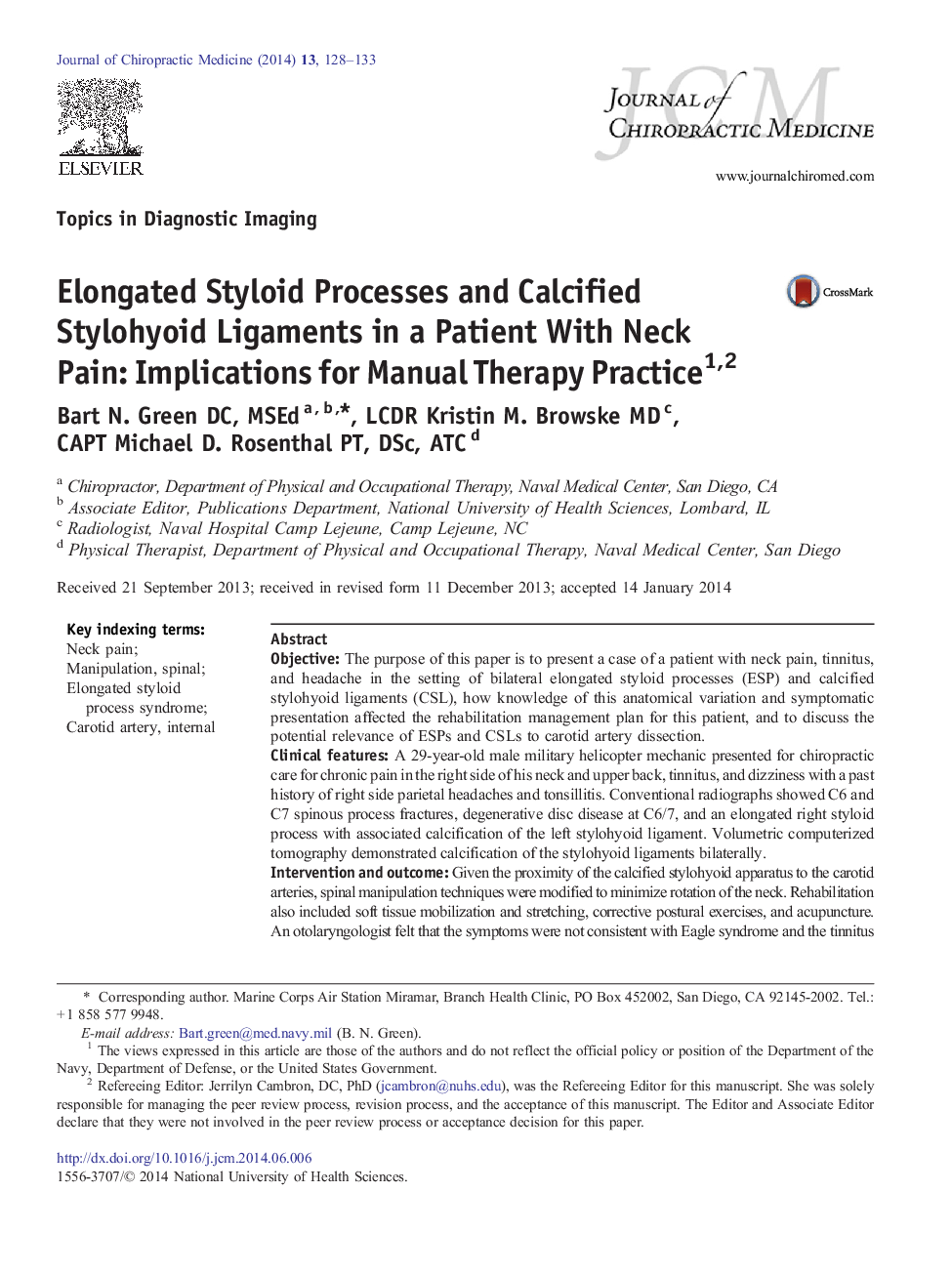| کد مقاله | کد نشریه | سال انتشار | مقاله انگلیسی | نسخه تمام متن |
|---|---|---|---|---|
| 2619913 | 1135547 | 2014 | 6 صفحه PDF | دانلود رایگان |
ObjectiveThe purpose of this paper is to present a case of a patient with neck pain, tinnitus, and headache in the setting of bilateral elongated styloid processes (ESP) and calcified stylohyoid ligaments (CSL), how knowledge of this anatomical variation and symptomatic presentation affected the rehabilitation management plan for this patient, and to discuss the potential relevance of ESPs and CSLs to carotid artery dissection.Clinical featuresA 29-year-old male military helicopter mechanic presented for chiropractic care for chronic pain in the right side of his neck and upper back, tinnitus, and dizziness with a past history of right side parietal headaches and tonsillitis. Conventional radiographs showed C6 and C7 spinous process fractures, degenerative disc disease at C6/7, and an elongated right styloid process with associated calcification of the left stylohyoid ligament. Volumetric computerized tomography demonstrated calcification of the stylohyoid ligaments bilaterally.Intervention and outcomeGiven the proximity of the calcified stylohyoid apparatus to the carotid arteries, spinal manipulation techniques were modified to minimize rotation of the neck. Rehabilitation also included soft tissue mobilization and stretching, corrective postural exercises, and acupuncture. An otolaryngologist felt that the symptoms were not consistent with Eagle syndrome and the tinnitus was associated with symmetric high frequency hearing loss, likely due to occupational noise exposure. Initially, the patient's symptoms improved but plateaued by the fifth visit.ConclusionNeck pain in the presence of ESPs and CSLs can be associated with Eagle syndrome, which can include ipsilateral head and neck pain, odynophagia, dysphagia, and cerebrovascular symptoms. This case, initially thought to be Eagle syndrome, highlights proper diagnostic workup for this condition and presents potential contraindications to consider with regard to cervical spine manipulation in such patients. Manual therapy precautions pertaining to cervical spine manipulation may be appropriate in cases involving ESPs and calcified stylohyoid ligaments.
Journal: Journal of Chiropractic Medicine - Volume 13, Issue 2, June 2014, Pages 128–133
